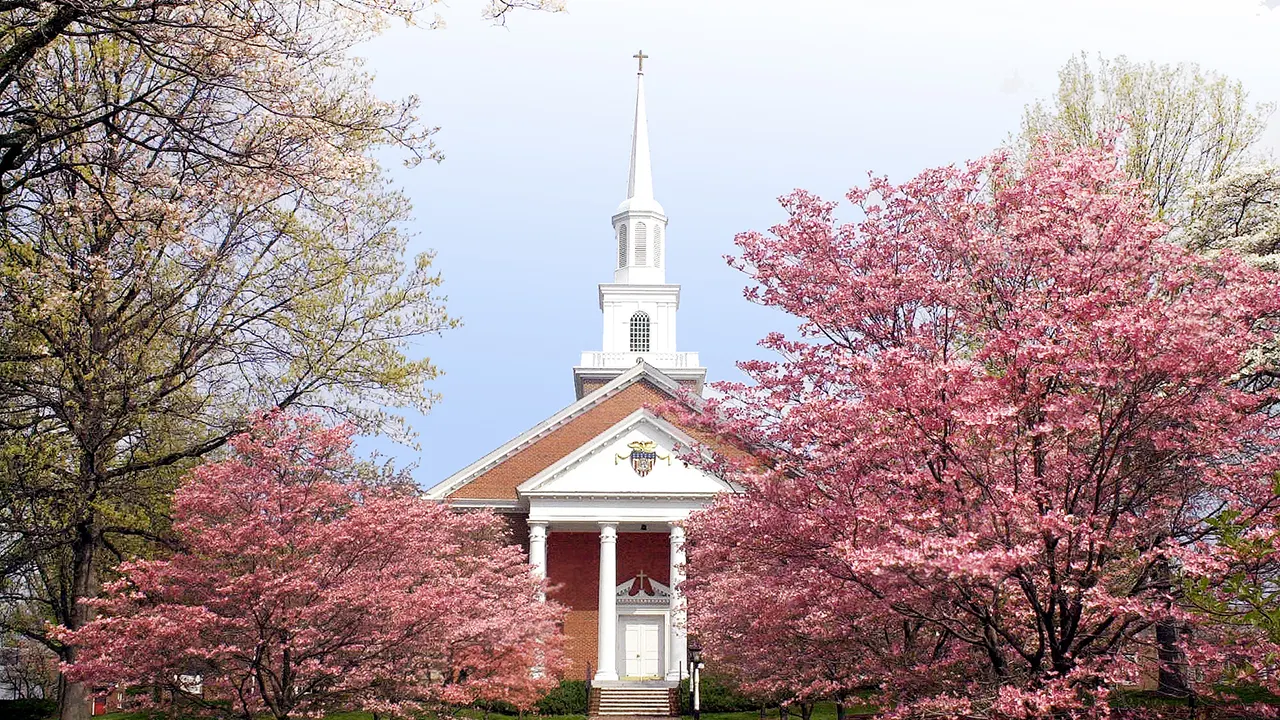Copyright Lewiston Morning Tribune

The verdict is in: Idaho ranks 14th and Washington ranks 37th when lining up the most religious states in the nation. How the Pew Research Center got the results is straight-forward. It judged a state’s religiosity based on residents’ answers to four questions on a survey. The reasons leading to a state’s place in the list are harder to conclusively determine. In fact, it’s mostly guesswork, sociologists said. “One of the things is, when you have descriptive data like this, you can really only start to create hypotheses,” said Mark Killian, Whitworth University sociology professor who studies religion. Sociologists of religion have some theories, though — the historic presence of certain religious groups, political migration and a state’s laws and regulations. The most mentioned theory was the role of migration due to political beliefs, and its connection to religion. One reason people choose to move to other states is due to an alignment between an individual’s political beliefs and the state’s political leaning, Killian said. Because politics are becoming increasingly correlated with and tied to religious identity, migration due to politics turns into migration due to religion, he added. Pew’s 2023-24 Religious Landscape Study found that 61% of those who have a high level of religiousness tend to lean Republican compared to 32% who lean Democrat. Eight percent had no leaning. The study also found that 67% of people who have a low level of religiousness lean Democrat compared to 27% who lean Republican. Five percent had no leaning. Over the past decade, Scott Draper, College of Idaho anthropology and sociology professor who studies religion, said people have increasingly been identifying as both Republicans and conservative/evangelical Protestants. The connection between both identities could go back even further than that, Killian said. Prior to the mid-20th century, he said that evangelicals had a variety of political leanings or were nonpartisan. Then some people, most notably American pastor and televangelist Jerry Falwell, worked to merge religious identification with specific political stances — especially the pro-life movement. “Up until that point, a lot of evangelicals weren’t necessarily pro-choice, but there was no pro-life movement” in evangelicalism, Killian said, because the pro-life movement was primarily Catholic, and evangelicals wanted to keep themselves ideologically separate. Then, Killian said, Falwell worked to consolidate political power by commingling religious views with certain political stances, primarily abortion and sexuality. “Now three generations later, we have those reverberations and these worldviews have spun off,” he said. “There’s some who think you cannot think of faith apart from your politics.” How evangelicals merged faith and politics Political identification and its correlation with belief systems or the lack thereof seems to go both ways. Desiree Brunette, a Boise State University sociology lecturer who studies religion, said liberal people tend to be less religious. That trend could explain why Washington, a liberal state, ranks low overall on religiosity in the Pew study. The Religious Landscape Study judged the “overall religiousness” of people through a combination of four factors: prayer frequency, belief in God or a universal spirit, religion’s importance to people’s lives and religious attendance. It determined that 37% of people in Idaho are highly religious compared to 25% of people in Washington. Determining the religiosity of a state can also change based on how it is measured. Draper said the study measured overall religiosity pretty reasonably, but that many sociologists of religion determine people’s religious commitment based on frequency of religious attendance. “People can talk about what they believe or how strongly they feel or think something,” Draper said. “It’s the actual behavior — are you actually going to church?” The percentage of people who attend religious services at least monthly tells a similar story for Washington, which also ranks 37th in the nation with 27% of people attending religious services at least monthly. The alternative idea of religiosity changes Idaho’s place in the list slightly, moving up to 11th in the nation with 40% of people attending religious services at least monthly. No matter how it is measured, sociologists said the connection between politics and religion, and the migration of people based on partisan ideologies could be driving the levels of religiousness in each state. Californians migrating to Idaho is an example. The U.S. Census Bureau estimated that in 2023, almost 82,000 people moved from another state to Idaho, and more than 20% of those people — the largest percentage of any state — came from California. Anecdotally, Draper said conservative Idaho residents often despair about the influx of Californians due to perceptions of conflicting political views. “I often want to point out that I think those Californians are probably a little more conservative than you think,” Draper said. “It’s geographical sorting based on partisanship.” “Now, this is very hypothetical,” Draper said, adding that he didn’t think people were moving in between states solely due to religious views. The Mormon Corridor’s lasting influence Past migrations of religious groups and their continued presence in a state could also influence the state’s religious ranking, Draper said. Idaho and Utah both tend to be more religious when compared to other western states, which Draper said might be due to the influence of Latter-day Saints, who are members of The Church of Jesus Christ of Latter-day Saints. “They’re instrumental in (Idaho), for religious identity,” Draper said. Driven by a desire for religious freedom, Latter-day Saints began migrating beyond the borders of the United States at the time, in the mid-1800s, looking for a place with a low population, and settling primarily in what is now Utah and the surrounding area — known today as the “Mormon Corridor.” When Brunette moved to the state 20 years ago, she said she noticed how many laws seemed tied to religious views — things like not being able to buy liquor on Sundays in some places, the near-total abortion ban and the faith-healing exemption to child abuse and neglect laws. “That felt really informed from the Latter-day Saints population, ” Brunette said. The religious-based laws in Idaho seem to be based on a Christian worldview rather than other religious belief systems, Brunette said. For example, abortion bans are widely viewed as a violation of Jewish religious freedom, she added. Differences in the religious ranking of states could be tied to these types of laws and views on religious freedom, which tend to attract certain religious communities, Brunette said. “There’s more protections here for people that might be considered a little fringy,” she said, mentioning fundamentalist groups like the Followers of Christ. “That would be my guess.” Religion’s role in the American life The study’s data gets more granular, and the findings indicate potential trends in the way people engage with and experience religion in their lives. In Washington, 30% of people say religion is very important in their lives compared to 45% in Idaho. Only eight states had 50% or more of people who said religion was very important in their lives. Although religion can often be seen as very important to people and influencing their political reasoning and discussions, Draper said it was interesting that most people weren’t ranking it as very important in their lives. Although not directly comparable due to changes in how the survey was conducted, Pew’s data found that the amount of people who say religion is very important in their lives is dropping. In 2007, 58% of adults in Idaho said religion is very important in their lives compared to 51% in 2014 and the 45% in 2023-24. The decline is true for Washington as well. In 2007, 48% of adults in the state said religion is very important in their lives compared to 44% in 2014 and 30% in 2023-24. The decline of religion’s importance directly conflicts with the rise in people’s perception of religion’s importance in American life. According to Pew, people’s perception of whether religion is gaining influence in American life jumped up significantly in 2025, although 68% of people still feel it is losing influence. Just like overall religious trends, it’s all guesswork on why religion is seen to be gaining influence in American life while fewer people are ranking it as very important to them. Brunette speculated that the people influencing politics are both the most religious and have the loudest voices. Killian said his hunch is that people aren’t ranking religion as very important in their lives because they’re replacing it with politics. “Religion becomes less important because politics is religion for some people now in these conservative states,” Killian said. There are others who ascribe to religion who view the uplifting of political views based on Christianity as a form of idolatry, he added. Evangelical growth as mainline churches shrink The breakdown of people who ascribed to certain religions in 2023-24 and its comparison to previous Religious Landscape Studies also reveals trends in religious demographics. In Idaho, Draper pointed out that Catholics and mainline Protestants have dropped from 18% and 16%, respectively, in 2007 to 9% and 7%, respectively, in 2023-24. At the same time, evangelical Protestants increased in the state from 22% in 2007 to 31% in 2023-24. Latter-day Saints have also declined in Idaho, from 23% in 2007 to 14% in 2023-24, despite the way Draper said they have “historically characterized” the state. The drop could be due to the out-migration of Latter-day Saints, or attrition, Killian said. Washington has seen drops in identification with Christian religious sects and some growth in populations of “other religions,” but Draper said the most notable change to him was the increase in people identifying as religiously unaffiliated, often called “nones” because they believe in nothing in particular. In 2007, 23% of surveyed Washington residents identified as religiously unaffiliated compared to 38% in 2023-24. “I’m really struck by that,” Draper said. “That’s really high.” There are often a lot of reasons “nones” could be growing, Draper said, adding that the way the groups are measured or whether people understand their own affiliation can affect the data. He said the Pew Research Center’s data tends to be reliable. The growth of “nones” can be hypothesized to be tied to politics, Draper said. Other sociology of religion scholars have proposed that people are disaffiliating from specific religious groups because of how the religion is becoming associated with politics, he added. “A lot of younger people who grew up in evangelical Protestant families, they become sort of disgusted with their family’s politics and they might back away entirely from religion and might identify less strongly, and might prefer a different term,” Draper said. “They might be devout still, but not want to identify.” The growth of “nones” in Washington could also be tied to partisan geographical sorting, Draper said. At the end of the day, the sociologists said interpreting the data is all speculation. “There are so many different layers to this,” Killian said. The complete Religious Landscape Study is available at pewresearch.org/religious-landscape-study. This story was written in partnership with FaVS News, a nonprofit newsroom covering faith and values in the Inland Northwest.



